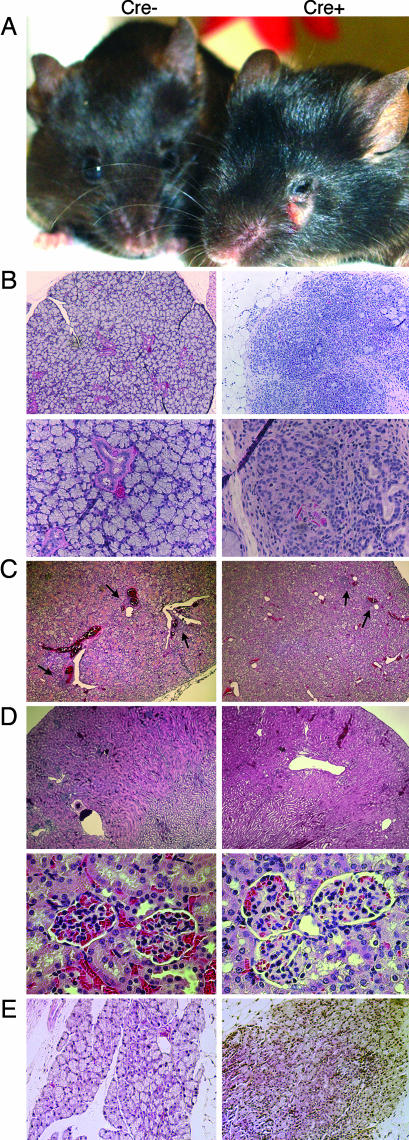Fig. 1.
Autoimmune disease resembling SS in adult r1ΔT/r2n mice. (A) A 4-month-old Cre+ mouse shows corneal opacity and inflammation around the eyes due to irritation and excessive scratching. These mice also show enlargement of the periorbital area and the parotid glands. (B) Hematoxylin/eosin stains of the intraorbital lacrimal glands of a 4-month-old Cre+ mouse and its littermate control. (Magnification: ×10 in Upper; ×40 in Lower.) (C) Both Cre− and Cre+ have focal periductal infiltrations of the submandibular salivary glands (black arrows) that progress as mice age. (Magnification: ×4.) (D) Both Cre− and Cre+ mice are free of kidney pathology, thus eliminating the possibility of SS secondary to lupus. (Magnification: ×4 in Upper; ×40 in Lower.) (E) Lacrimal gland pathology in an r1ΔT/r2n mouse generated by using CD4-Cre. A CD4-Cre− littermate served as a control. (Magnification: ×10.)

